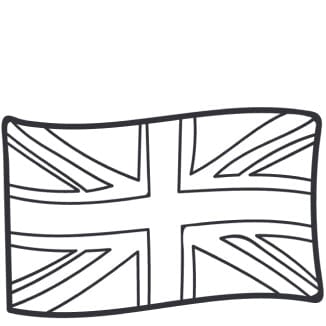Our brushed wool sweaters and cardigans (including the Lenzie and Lunan sweaters) are among our most coveted styles, thanks to their classic style and unique texture. Wearing this almost felt-like wool feels like a warm hug, and is perfect for anyone with a sensitivity to the itchiness of wool in its natural state. The wool chosen for these sweaters was spun by a prestigious UK-based spinner, boasting the characteristics of traditional Shetland wool with its comfort and warmth. The wool comes from the first clip of the lamb, an initial shear that is unrivalled in softness, finer and more expensive. Once knitted, the sweaters are next brushed with teasel thistles, a time-honoured technique that is used to soften yarns by elongating the fibres. This makes our sweaters beautifully soft to the touch with a relaxed, felted quality that is impossible to replicate with man-made brushes. Below, we’ll go into more detail on both the history of brushed wool sweaters, and the historical use of teasels in knitwear productions.


The history of brushed wool sweaters
Brushed wool sweaters gained popularity in the 1950s and 60s when Shetland knits made their way across the Atlantic to the USA. Here, they became an iconic piece of mid-20th century fashion, adopted by Ivy League students as part of what is now a quintessentially preppy aesthetic.
Shetland wool had been used for generations to knit sweaters in Scotland. Its lightweight, warm and durable qualities made it ideal for Shetland’s cold and damp weather conditions, but raw Shetland wool can be itchy to those with a sensitivity to wool. The brushing technique was introduced initially to create a supremely soft texture that completely alleviated the itchiness, with the aesthetic value of this ‘shaggy’ texture being an additional benefit.
The ‘Shaggy Dog’ sweater attracted the attention of Ivy League students at the likes of Princeton and Yale, where it became almost a uniform, effortlessly communicating a casual elegance to its wearers. These brushed wool sweaters were simple in style and slimline in silhouette, usually featuring a crew-neck or v-neck, and occasionally monogrammed. They were worn over oxford shirts, paired with khaki trousers and tweed jackets for a quintessentially preppy look which communicated a collegiate style. The ‘shaggy’ appearance of the brushed wool gave it a more casual appearance compared to traditional knitwear, which felt refreshing at the time, portraying the perfect balance of casual and elegant.
Of course, celebrity style also contributed to the lingering popularity of brushed wool knitwear. At the same time that preppy Ivy Leaguers were filling their wardrobes with ‘shaggy dog’ knits, the likes of John F. Kennedy, Paul Newman, Steve McQueen and Cary Grant were championing the style. But it was perhaps Mick Jagger wearing a baggier version of a brushed wool knit on stage in London that really cemented the style as a mid-century classic.


The history of the teasel
There is only one way to create the iconic felt-like softness of traditional brushed wool sweaters, and that is by using teasels.


Also known as Fuller’s thistles, teasels have distinctive spiky seed heads which have been used in the finishing process of woollen fabrics for centuries. Although we are mainly concerned with their use in brushing wool, they were also used by fullers (hence the name) who cleaned wool – they were used to extract small pieces of dirt which the sheep may have picked up. They are a biennial plant which produce small lavender-coloured flowers which are adored by bees and butterflies. The seed heads, the important part which are treasured for their multiple uses in the textile industry, appear after flowering.
Before the advent of modern machinery, teasels were first used during the fulling process (which involved cleaning, shrinking and thickening wool), before being mounted onto a frame to gently raise the nap (the fuzzy surface) of the cloth to create a softer texture. Teasels were favoured for this process as they are the perfect juxtaposition of stiff and flexible, which helped to protect the precious fibres of the wool from tearing.
Teasels were also used traditionally to finish knitwear, brushing the wool to create a fluffy, soft and warm texture. Dried teasel heads would be attached to a frame and gently dragged across the surface of the wool; the bristles of the teasels catching and lifting the fibres. Historically, this process would be carried out by hand, although machines named teasel gigs were later developed with hundreds of teasel heads attached to cylinders to speed up the process.
Later still, the use of teasels declined in the 19th century with the advent of mechanical tools and metal ‘cards’. However, our brushed wool knitwear is all still brushed with real teasels for an authentic look. The machines used to replicate the teasel process result in knitwear that feels a little flat and doesn’t quite have the same look. I find the machines to also be quite aggressive, and am thankful that the artisans we work with rely on time-honoured methods and good old Mother Nature!
Teasels are so integral to the textile industry, that they are symbolic of wool production in many areas of England and France. Tuckers Hall in Exeter still has teasels as their coat of arms, showing how important these humble plants once were to the industry!


Discover our brushed wool sweaters and cardigans to introduce this classic, soft and warm style into your own wardrobe.











Leave a comment